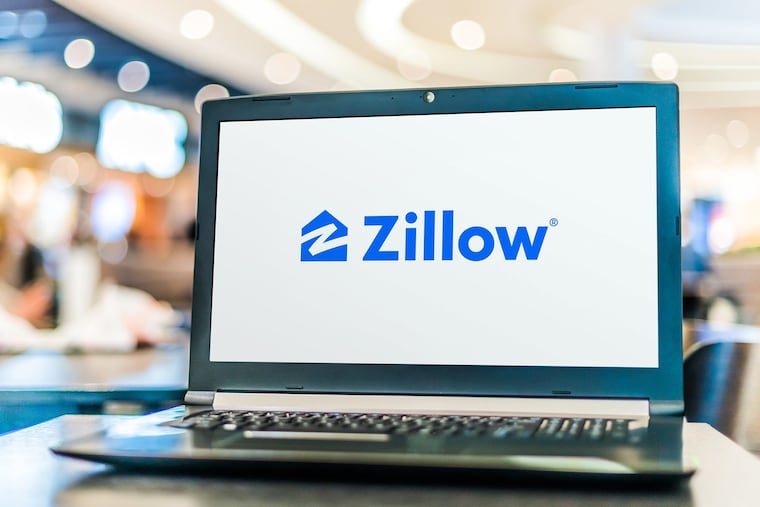Zillow’s flipping halt marks major collapse in housing push
Now, investors are wondering how Zillow will move on from the home-flipping business, core to its strategic goal, to one that gets a bigger slice of property transactions.

It was the startling culmination of a turbulent few weeks for America’s most famous real estate company: Zillow Group Inc. pulled the plug on its tech-powered home-flipping operation.
The decision, reached by the board of directors Tuesday morning, sent the company’s shares plummeting. It also raised big questions about what comes next for Seattle-based Zillow, which had staked its future on the idea that its data scientists could power a business that buys and sells thousands of homes a month.
Now analysts, competitors and industry observers are left to puzzle over how exactly the company managed to misjudge the housing market so badly that it's writing down more than $500 million on the real estate it purchased.
Zillow’s shares plunged 22.95% Wednesday to close at $65.86, the biggest intraday drop since March 2020. The stock closed last year at $135.94 after nearly tripling as the company rode the pandemic housing rally.
Now, investors are wondering how Zillow will move on from the home-flipping business, which was central to its strategic goal of shifting from a company known for real estate listings to one that gets a bigger slice of the lucrative space around property transactions.
“It’s a drastic and unexpected move,” said Ygal Arounian, an analyst at Wedbush. “It was a central part of what the company was built on over the past three years, and management needs to go back to the drawing board and fill in the gap as it continues to aim to be a bigger part of the overall real estate transaction.”
The first sign of trouble emerged Oct. 17, when Bloomberg reported that the company was pausing new home offers for the rest of the year. While the company blamed a labor shortage, it quickly became clear that Zillow had struggled to read the frothy pandemic housing market — overpaying for homes that it would later be forced to sell at discounts.
From there, the collapse was swift. Bloomberg reported Monday that the company was marketing about 7,000 homes for roughly $2.8 billion to institutional investors. And a day later it was all over, with Zillow telling investors that it would stop flipping homes, write down existing inventory, and reduce its workforce by 25%. The company had roughly 8,000 employees as of Sept. 30.
Zillow's third-quarter results showed it lost more than $380 million in the operation, called Zillow Offers.
On a call with investors, chief executive officer Rich Barton said the risks of getting home prices wrong were greater than he’d anticipated, turning the company into something like a “leveraged housing trader” that faced “a high likelihood, at some point, of putting the whole company at risk.”
At the same time, Zillow decided that the home-flipping service — intended to ease the headaches that consumers face when selling a house — wasn’t broadly applicable. Roughly 10% of serious sellers accepted Zillow’s offers, while the rest preferred to sell their homes the traditional way.
The company had spent three years and more than $1 billion trying to push its iBuying service. But, ultimately, it decided that its offers were appealing to only a small portion of the market.
"Zillow's experience shows that iBuying is a tough business where pricing accuracy is paramount," said Court Cunningham, CEO of Orchard, a venture-backed company that offers an alternative path to disrupting housing. "But it also shows that 90% of consumers did not want the iBuyer price."
For most of Zillow’s 15-year history, the company has been known for publishing online real estate listings and home-price estimates — called Zestimates — and seeking to profit by connecting agents with potential clients. In 2018, Barton, one of the company’s founders, reclaimed the role of CEO and pivoted into the high-tech home-flipping business.
Zillow used pricing algorithms to buy homes from their owners, make light repairs, and put them back on the market. Barton set an ambitious goal, seeking to buy 5,000 homes a month by 2024.
Barton now faces his next pivot after the company determined it was too risky to continue banking on its ability to predict housing prices. He'll have to reposition the company as it winds down the flipping business and faces widening losses on thousands of homes it has under contract.
“Zillow missed the off-ramp,” said Mike DelPrete, a real estate tech strategist. “It’s like you’re driving on the highway and you see brake lights ahead of you. You take your foot off the gas, you pump the breaks. Zillow didn’t do either of those things until it was too late.”